
- Home
- Clinical Chemistry Tests
- Porphyrins/Porphyria analysis (Urine/Faecal/Blood specimens)
Porphyrins/Porphyria analysis (Urine/Faecal/Blood specimens)
Specimen Volume
2mL urine (preferably early morning urine); ~5g stool sample; 5-10mL EDTA whole blood.Sample Preparation
Turnaround Time
2-3 weeksSample Processing In Laboratory
Usual. All specimens must be protected from light.Sample Stability
Stable at 4 ºC for up to one week but should be referred to Cardiff the next working day.General Information
The porphyrias are uncommon disorders of haem biosynthesis and their effective management requires prompt and accurate diagnosis.
Laboratory investigations depend on the clinical presentation and/or family history, therefore as much information as possible should be included with the request, e.g. medications, alcohol, any family history.
Ideally all specimens collected should be sent to the referral laboratory. Analysis will only be performed on all specimens if front line tests and/or clinical picture indicate that analysis is required. For further information regarding sample choice strategies please use the following links or refer to www.cardiff-porphyria.org:
Acute symptoms with no previous history
Acute asymptomatic with past/family history of porphyia, type unknown
Cutaneous (bullous) porphyria - all types
Cutaneous (acute photosensitivity) porphyria
Pseudoporphyria with cutaneous symptoms
NB: Screening for active cutaneous porphyria can be achieved by blood porphyrin screen alone. However, urine and faecal porphyrin analysis may be required to distinguish between certain cutaneous porphyrias and to support subsequent monitoring of treatment. It may therefore be more cost effective to send urine and EDTA blood for frontline testing.
For further information regarding the test repertoire, specimen types and clinical utility of different investigations refer to:
Cardiff Porphyria Service Test Repertoire
Patient Preparation
Specimens should be collected whilst patient symptomatic if acute porphyria is suspected.
Information required for Reference Lab: Full patient name, REG Number and DOB. Relevant clinical information, particularly whether neurological or dermatological symptoms are present. Whether patient was symptomatic at the time specimens were collected.
If part of a family study the name of the proband.
Notes
Summary of porphyrin analyses that may be performed (refer to sample choice strategy links above for advice regarding which specimen types to send):
Urine analysis (early morning urine preferred)
- Total porphyrins and PBG analysed on all samples (UPORPH/UPOR). If positive total porphyrins, HPLC fractionation will be performed (discretion of referral laboratory; UPOR2)
- ALA if pre-pubertal and/or clinical picture indicates (at discretion of referral laboratory; UALA)
Blood analysis
- Plasma scan front line test (BPOR1)
- If not protected from light and ?cutaneous porphyria/?acute photosensitivity, RBC screen will be performed (BPOR2). If positive, total RBC protoporphyrin analysis performed (BPOR3)
Faecal analysis (generally only performed if urine/blood results and/or clinical picture indicates)
- Total faecal porphyrins and HPLC fractionation (FPOR)
Handling Samples in the labortatory prior to sending to referral lab
Samples that are not wrapped to protect them from light exposure but are received in the lab less than 6 hours after collection can be assayed. Please add a comment to the request form stating that exposure to light has occurred. The referral lab will include this on the report and advise that the results should be interpreted taking this into account. This will allow the requesting clinician to decide whether they wish to repeat the tests.
However in patients with active porphyria, porphyrin concentrations are greatly increased and would remain detectable despite light exposure over this time period.
Sarnples exposed to light for greater than 6 hours should not be assayed. The samples should be discarded and repeat samples requested straight away, particularly if the patient is still on-site.
Please contact the referral lab if you would like to discuss individual cases as factors such as patient symptoms, type of porphyria suspected, family history of porphyria and sample availability may inform further advice.
Reference Range
Specialist investigations: Ref ranges reported by referral laboratory (Cardiff porphyria service)
Specifications
- EQA Status: WEQAS
- EQAS Scheme: Yes
Link to Further Information
https://pinboard.in/u:duty_biochemist/t:Porphyria/Creation Date
Monday, 08 August 2011Modification Date
Thursday, 29 February 2024General Information
Location of Laboratories
Copyright UHB Pathology 2018
Protection of Personal Information – Clinical Laboratory Services comply with the Trust Data Protection Policy and have procedures in place to allow the Directorate and it’s employees to comply with the Data Protection Act 1998 and associated best practice and guidance.
University Hospitals Birmingham medical laboratories at Queen Elizabeth Hospital, Heartlands Hospital, Good Hope Hospital and Solihull Hospital are UKAS (United Kingdom Accreditation Service) accredited to the ISO 15189:2012 standard. For a list of accredited tests and other information please visit the UKAS website using the following link: https://www.ukas.com/find-an-organisation/
- Molecular Pathology is a UKAS accredited medical laboratory No. 8759
- Biochemistry is a UKAS accredited medical laboratory No. 8910
- Haematology and Transfusion is a UKAS accredited medical laboratory No. 8784
- Clinical Microbiology is a UKAS accredited medical laboratory No. 8760
- Cellular Pathology is a UKAS accredited medical laboratory No. 10141
- Musculoskeletal laboratory is a UKAS accredited medical laboratory No. 9897
- Heartlands, Good Hope and Solihull Hospital pathology laboratories are a UKAS accredited medical laboratory No.8217.
Tests not appearing on the UKAS Schedule of Accreditation currently remain outside of our scope of accreditation. However, these tests have been validated to the same high standard as accredited tests and are performed by the same trained and competent staff.
For further test information, please visit the test database: http://qehbpathology.uk/test-database
For further information contact Louise Fallon, Quality Manager, 0121 371 5962
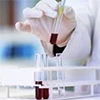 Biochemistry
Biochemistry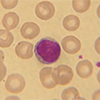 Haematology and Transfusion
Haematology and Transfusion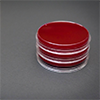 Clinical Microbiology (Including Virology)
Clinical Microbiology (Including Virology)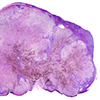 Cellular Pathology
Cellular Pathology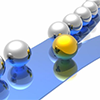 General Information
General Information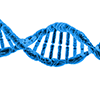 Molecular Pathology
Molecular Pathology